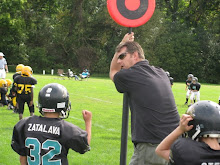In the following text there will be a re-examination of my learning style and a deeper reflection on the various learning theories commonly accepted within educational circles. Recently, as an assignment for a current online class I was asked to reflect on, evaluate, and describe the learning style I closely associate myself with, based on these learning theories. Now that I have more closely examined some of the vast oceans of research advanced by just as many “experts” I will be able to shed some more light on my own assumptions.
First, I am asked to explore how I have changed my opinion of my own learning style based on the research I have done in my recent coursework. In fact, I haven’t changed my beliefs that I follow the constructivist learning theory with an emphasis on a kinesthetic learning style. Further, the research I have done only reaffirms this belief, because not only do people use their minds to learn, but also they take this component and interact with experience(s) to create deeper and more meaningful learning (Ertmer & Newby, 1993, p. 62). Also, the definition of constructivism proposed by Ertmer and Newby (1993) “equates learning with creating meaning from experience.” In addition to the theory I align myself with, I consider myself a kinesthetic learner, which literally means I learn best by doing. To further strengthen my own learning, modeling, a component of social learning theory, adds to my own success. These elements provide me with the opportunity to observe, interact, practice, inject prior knowledge, and apply what I have constructed as meaning in learning, to new learning situations. Finally, I believe, “experiences enable learners to create schemas – models in their heads that are continually changed, enlarged, and made more sophisticated” through actively engaging in new learning situations (Clark, 1999).
Now the question is, how does technology play a role in my learning? First I would say that the computer is the primary way technology figures into my learning, for obvious reasons, especially evident in the use of the forum (blog). However, not only am I utilizing the computer for an online course, but also I have used the various software elements, and web based elements as well. For example, not only do I have this blog, but I also have used the basic elements of word processing and power points and any skill set associated with their use. Further, I have had to become acquainted with the vast pool of knowledge and resources provided through my online college library, but the public browser options as well. With an instructor acting as a facilitator (providing some structure) I have become an active learner engaged in creating meaning within the requisites of the current course I am navigating.
I truly am “constructing” my learning through active engagement and creating meaning to be applied now and for later learning situations. In fact, constructivists assume that instructors should “structure situations such that learners become actively involved with the content through manipulation of materials and social interaction” (Ormrod, Schunk, & Gredler, 2009, p. 185).
References:
Clark, D., (December 1, 1999). A Time Capsule of Training and Learning. Retrieved December 7, 2009 from http://www.nwlink.com/~donclark/hrd/history.html
Ertmer, P. A., & Newby, T, J. (1993). Behaviorism, cognitivism, constructivism: Comparing critical features from an instructional design perspective. Performance Improvement Quarterly, 6(4), 50-71.
Ormrod, J., Schunk, D., & Gredler, M. (2009). Learning Theories and Instruction (Laureate custom edition). New York, NY: Pearson.
Making the Case for Employee Development
14 years ago




No comments:
Post a Comment